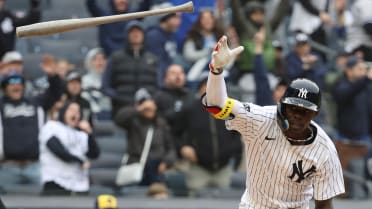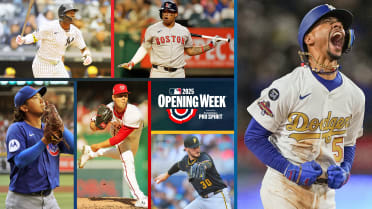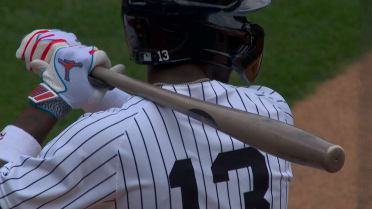The baseball world lost a legend with the passing of Hall of Fame pitcher Tom Seaver, who died this week at the age of 75.
The news, which broke Wednesday, unleashed a torrent of tributes to the man who earned not one but two nicknames -- “Tom Terrific” and “The Franchise” -- won a Rookie of the Year and three Cy Young Awards, was a 12-time All-Star and stands as the greatest player in the history of the Mets.
Nearly 35 years after he last stepped on a Major League mound, Seaver retains a lofty place in baseball history. In fact, one could argue that going by a combination of dominance and longevity, Seaver’s pitching career was unmatched.
As valuable as it gets
Let’s look at Baseball-Reference’s all-time leaderboard for pitching wins above replacement (WAR). Of the top six pitchers, five completed their careers before the sport began integrating in 1947, and four of those overlapped with the Dead Ball Era. Cy Young (1890-1911), Walter Johnson (1907-27), Kid Nichols (1890-1906), Pete Alexander (1911-30) and Lefty Grove (1925-41) all deserve their status as all-time greats, but they played at a time when the game looked and was played far differently than it is today.
If you focus on the years since integration, here are the top five pitchers by WAR:
- Roger Clemens: 138.7
2) Tom Seaver: 106.0
3) Greg Maddux: 104.8
4) Randy Johnson: 103.5
5) Phil Niekro: 97.0
Clemens is the clear No. 1 here, but he has also seen his accomplishments clouded by associations with performance-enhancing drug use. While Clemens has denied using steroids, he has seen his Hall of Fame support lag, receiving a high of 61.0% of the vote in the 2020 cycle, leaving him well shy of the needed 75% with two years of eligibility remaining.
Seaver, on the other hand, set a record for Hall of Fame support when he received 98.8% of the vote in his first year on the ballot in 1992. No player surpassed that mark until Ken Griffey Jr. (99.3%) in 2016.
An elite peak
Seaver at his best was an absolute force of nature. The right-hander was great from the beginning, winning NL Rookie of the Year for the 1967 Mets, but he soon got even better.
Seaver led the NL with 25 wins and grabbed his first NL Cy Young Award in 1969, helping the “Miracle Mets” make a shocking run to a World Series title. But his two best seasons actually came in New York in 1971 and ‘73.
• In 1973, Seaver pitched 290 innings, again leading in ERA (2.08), ERA+ (175), FIP (2.57), WHIP (0.976), strikeouts (251) and K/9 rate (7.8), plus complete games (18) and strikeout-to-walk ratio (3.9). This time, he logged 10.6 WAR.
Since integration, Seaver is one of only seven pitchers to have multiple 10-WAR seasons, joining Steve Carlton, Clemens, Bob Gibson, Randy Johnson, Sandy Koufax and Wilbur Wood.
Great young and great old
As mentioned, Seaver was a star from the get-go. In 1967, he threw 251 innings for the Mets and managed to go 16-13 for a club that was 61-101 overall, posting a 2.76 ERA and accruing 6.0 WAR.
Fast-forward 18 years. Seaver was, unquestionably, past his prime. The Mets sent him to Cincinnati in an infamous trade in 1977, though he was traded back after a career-worst 5.50 ERA in 1982. Seaver righted the ship in ‘83 and then moved to the White Sox the next season.
By ‘85, he was 40 years old, and yet there was still gas in the tank. Seaver piled up 238 2/3 innings, produced a 3.17 ERA and won 16 games, good for 5.0 WAR.
In modern baseball history (since 1900), 58 different pitchers have had at least one 5-WAR season at age 22 or younger. Eleven pitchers have done it at 40 or older. Only one has done both: Seaver.
Open up
There’s another number that sums up Seaver’s greatness, longevity and the respect he commanded within the game. It has nothing to do with WAR. The number is 16, the record number of Opening Day starts Seaver made as a pitcher, which is two more than Carlton, Randy Johnson, Walter Johnson and Jack Morris.
That run included a 12-year streak of Opening Day starts -- tied for the second longest ever for a pitcher -- which began in Seaver’s second season in 1968. But he didn’t make his final one until 1986, when he was 41.
To put that number 16 in further perspective, consider this: Since Seaver debuted in the Majors, he is one of only 73 pitchers to start even one game in 16 different seasons.
But Seaver didn’t start just any game, he started Opening Day. An honor fit for one of the greatest pitchers baseball has ever seen.
Andrew Simon is an editor and writer for MLB.com.




